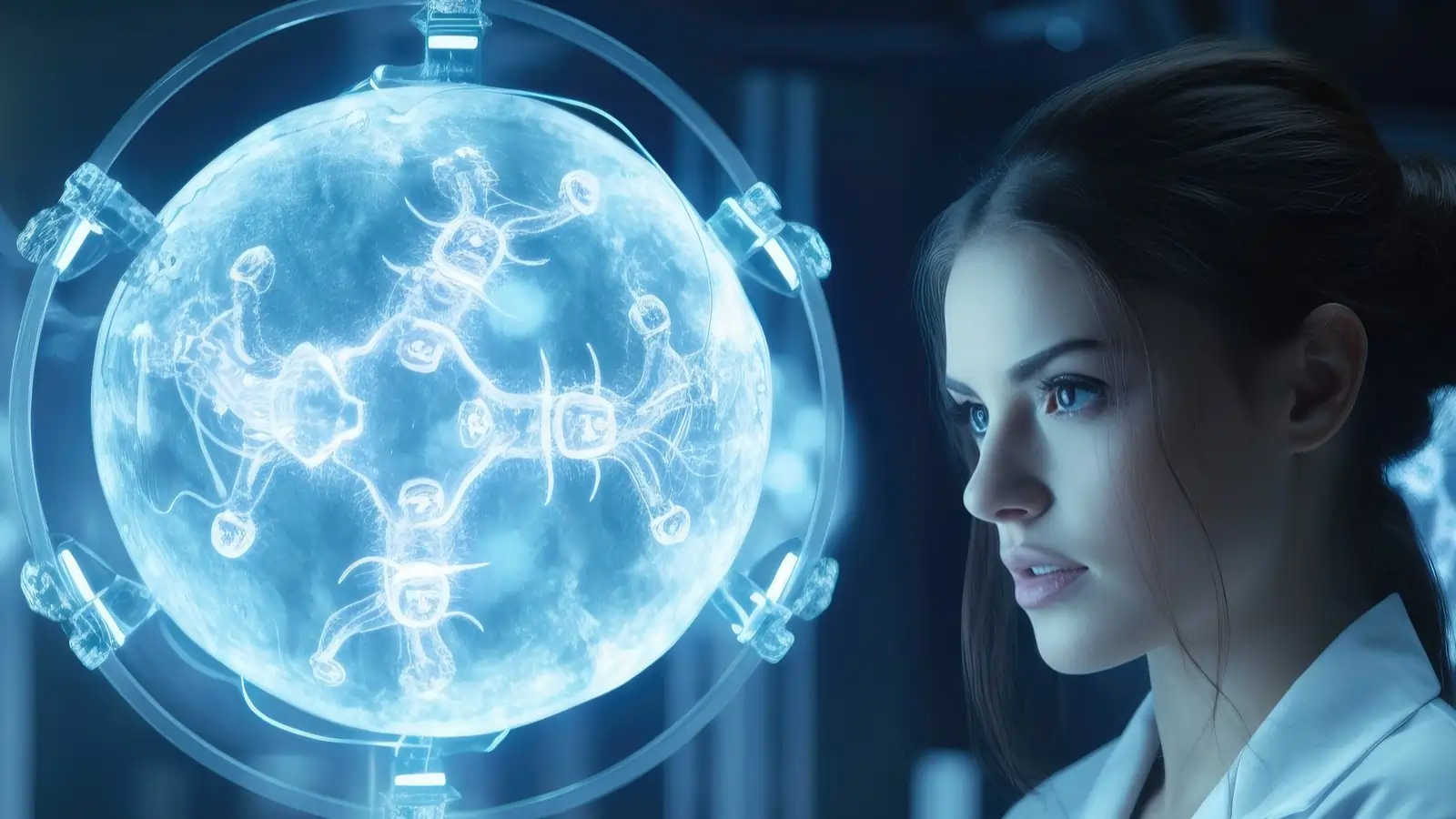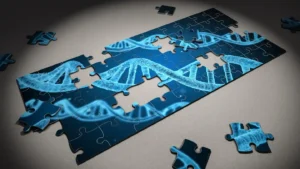Everything About Atoms Explained
Have you ever stopped to truly consider the “stuff” around you? The chair you’re sitting on, the air you’re breathing, the device you’re reading this on, and even you yourself – what are they all made of? It’s a question that has puzzled philosophers and scientists for millennia. The answer, simple yet profound, lies in the microscopic world of atoms.
These incredibly tiny particles are the fundamental building blocks of all matter. Everything you see, touch, smell, and taste is composed of atoms. Understanding atoms isn’t just a dry scientific pursuit; it’s a journey into the very essence of existence, revealing how the universe is constructed at its most basic level.
So, are you ready to witness this fascinating exploration and truly understand atoms? Let’s begin!
What Exactly Are Atoms, Anyway?
Imagine the smallest possible unit of something that still retains its unique properties. For gold, it’s an atom of gold. For oxygen, it’s an atom of oxygen. An atom is defined as the smallest unit of ordinary matter that forms a chemical element. It’s the point beyond which you can no longer divide a substance and have it maintain its distinct chemical identity.
For centuries, the idea of atoms was purely philosophical, an abstract concept. The ancient Greek philosopher Democritus, as early as the 5th century BC, proposed that matter was composed of indivisible particles he called “atomos,” meaning “uncuttable.”
This was a remarkably insightful idea, especially considering he had no scientific instruments to observe them. But it remained a philosophical concept for a very long time.
It wasn’t until the early 19th century that John Dalton, an English chemist, revived the atomic theory with scientific observations. He proposed that elements are made of atoms, that atoms of a given element are identical, and that chemical reactions involve the rearrangement of these atoms.
While some of his postulates have since been refined, Dalton laid the groundwork for modern atomic theory, moving the concept of atoms from philosophy to the realm of testable science.
What Are Atoms Made Of? Diving into Subatomic Particles
When we think about atoms, it’s natural to wonder, “What are atoms made of?” Despite their fundamental nature, atoms aren’t truly “uncuttable” as Democritus once believed. They are, in fact, composed of even smaller, more fundamental particles known as subatomic particles.
The three primary subatomic particles are:
- Protons: These are positively charged particles found in the nucleus of the atom. The number of protons in an atom’s nucleus is its atomic number, and this number uniquely identifies the element. For example, every hydrogen atom has one proton, every helium atom has two, and so on. This is a crucial aspect of atomic identity.
- Neutrons: Also located in the nucleus, neutrons are electrically neutral, meaning they carry no charge. Along with protons, they contribute significantly to the atom’s mass. The number of neutrons can vary within atoms of the same element, leading to what we call isotopes.
- Electrons: These are negatively charged particles that orbit the nucleus in a cloud-like region. Electrons are much, much lighter than protons and neutrons, and their arrangement around the nucleus dictates an atom’s chemical behavior. It’s the electrons that are involved in forming chemical bonds between atoms.
The core of an atom, containing protons and neutrons, is called the nucleus. Despite containing almost all of the atom’s mass, the nucleus is incredibly tiny, occupying only a minuscule fraction of the atom’s total volume. Imagine a pea in the middle of a football stadium – that’s roughly the scale of a nucleus to its atom! The vast majority of an atom is empty space, where the electrons whiz around at incredible speeds.
How Do Atoms Interact? The Dance of Chemical Bonds
Understanding how atoms interact is key to comprehending chemistry itself. Atoms are rarely found in isolation in nature (except for noble gases like helium and neon, which are exceptionally stable). Instead, they are constantly interacting with each other, forming molecules and larger structures through chemical bonds.
But why do they bond, and how does it happen?
The driving force behind atomic interactions is often the desire for stability. Atoms tend to achieve a stable electron configuration, similar to that of the noble gases, which have a full outermost electron shell. This is often referred to as the “octet rule” (though there are exceptions, especially for lighter elements).
Atoms achieve this stability primarily through three types of chemical bonds:
- Ionic Bonds: These occur when one atom essentially “donates” one or more electrons to another atom. This transfer of electrons results in one atom becoming a positively charged ion (cation) and the other becoming a negatively charged ion (anion).
The electrostatic attraction between these oppositely charged ions forms the ionic bond. Think of table salt (sodium chloride) – sodium gives an electron to chlorine, creating Na+ and Cl- ions that are strongly attracted to each other.
- Covalent Bonds: In covalent bonding, atoms share electrons to achieve a stable electron configuration. This sharing can be equal (nonpolar covalent) or unequal (polar covalent), depending on the electronegativity (the ability to attract electrons) of the atoms involved.
Water (H2O) is a classic example of covalent bonding, where hydrogen and oxygen atoms share electrons.
- Metallic Bonds: Found in metals, this type of bond involves a “sea” of delocalized electrons that are shared among a lattice of positively charged metal ions. This unique bonding explains why metals are excellent conductors of electricity and heat, and why they are malleable and ductile.
Beyond these strong intramolecular forces that hold atoms together within molecules, there are also weaker intermolecular forces that act between molecules. These forces, such as hydrogen bonds and Van der Waals forces, are crucial for properties like boiling points, solubility, and the structure of biological molecules like DNA.
Why Are Atoms Important? The Foundation of Everything
The question “Why are atoms important?” is almost like asking “Why is gravity important?” They are fundamental to our existence and our understanding of the universe. Here’s why:
- The Building Blocks of All Matter: This is the most obvious and profound reason. From the smallest virus to the largest galaxy, everything is made of atoms. Without atoms, there would be no matter, no life, no stars, no planets.
- Basis of Chemistry: Chemistry is, at its core, the study of how atoms interact, combine, and rearrange. Understanding atomic structure and bonding allows us to predict and explain chemical reactions, synthesize new materials, and develop new technologies.
- Foundation of Physics: Atomic physics delves into the internal structure of atoms and their interactions with electromagnetic radiation. This field has led to incredible breakthroughs, from quantum mechanics to nuclear energy.
- Crucial for Biology: Biological processes are complex chemical reactions happening at the atomic and molecular level. Understanding atoms allows us to comprehend how proteins fold, how DNA replicates, and how cells function.
- Technological Advancements: Our knowledge of atoms has paved the way for countless technologies. From semiconductors in our electronics to medical imaging techniques like MRI, atomic principles are at the heart of modern innovation.
In essence, atoms are the alphabet of the universe. By understanding them, we can begin to read and write the story of reality itself.
Common Misconceptions About Atoms: Separating Fact from Fiction
Despite their fundamental nature, there are several common misconceptions about atoms that often arise. Let’s clear some of them up:
- Atoms are like miniature solar systems: While the classic Bohr model of electrons orbiting a nucleus like planets around the sun is a useful simplification for introductory purposes, it’s not entirely accurate.
Electrons don’t follow fixed orbits. Instead, they exist in “orbitals,” which are regions of probability where an electron is most likely to be found. This is a key concept in quantum mechanics.
- Atoms are solid spheres: This goes back to Dalton’s original idea. In reality, as discussed, atoms are mostly empty space, with a dense nucleus surrounded by an electron cloud. This “emptiness” is one of the most mind-bending aspects of atomic structure.
- There’s air or empty space between subatomic particles: While there’s a lot of “empty space” within an atom, it’s not truly empty in the conventional sense. This space is filled with electromagnetic fields that govern the interactions between the charged particles. It’s not a vacuum in the way we might think of the space between planets.
- Atoms have clear, defined boundaries: Due to the probabilistic nature of electron orbitals, an atom doesn’t have a sharp, distinct edge. The electron cloud gradually fades out, making it difficult to pinpoint an exact “boundary.”
- All atoms are stable: While many atoms are stable, others are inherently unstable and undergo radioactive decay. These are known as radioactive isotopes, and their decay is the basis for nuclear power, medical diagnostics, and carbon dating.
The Journey of Discovery: Who Discovered Atoms?
The path to understanding atoms has been a long and winding one, built upon the insights of numerous brilliant minds. While Democritus first conceptualized “atomos,” the modern scientific understanding began to take shape much later. Who discovered atoms in the scientific sense? It’s not a single person, but a collective endeavor:
- John Dalton (Early 19th Century): As mentioned, Dalton is credited with developing the first truly scientific atomic theory, based on empirical evidence from chemical reactions. His work revolutionized chemistry.
- J.J. Thomson (1897): Through his experiments with cathode rays, Thomson discovered the electron, proving that atoms were not indivisible spheres but contained smaller, negatively charged particles. This led to his “plum pudding” model of the atom, where electrons were embedded in a positively charged sphere.
- Ernest Rutherford (1911): Rutherford’s groundbreaking gold foil experiment challenged Thomson’s model. By firing alpha particles at a thin gold foil, he observed that most passed through, but a small fraction were deflected at large angles, and some even bounced back.
This led to his revolutionary conclusion that atoms have a tiny, dense, positively charged nucleus with electrons orbiting around it – the nuclear model of the atom.
- Niels Bohr (1913): Bohr refined Rutherford’s model by proposing that electrons orbit the nucleus in specific energy levels or shells. He suggested that electrons could jump between these energy levels by absorbing or emitting discrete packets of energy (quanta). The Bohr model successfully explained the spectral lines of hydrogen.
- Erwin Schrödinger and Werner Heisenberg (1920s): These physicists were pioneers of quantum mechanics, which moved beyond the fixed orbits of the Bohr model.
Schrödinger developed the wave equation that describes the probability of finding an electron in a certain region around the nucleus (orbitals), while Heisenberg formulated the uncertainty principle, stating that one cannot simultaneously know an electron’s exact position and momentum.
Their work laid the foundation for our current, more complex understanding of atomic structure.
- James Chadwick (1932): Chadwick discovered the neutron, the neutral particle in the nucleus, which helped explain the mass of atoms and the existence of isotopes.
This continuous refinement of atomic theory, driven by observation and experimentation, highlights the dynamic nature of scientific progress. Each discovery built upon the last, leading us to our current, sophisticated understanding of atoms.
The Atomic World in Action: Real-World Applications
Our understanding of atoms isn’t just academic; it has profound real-world applications that touch almost every aspect of our lives.
- Medicine and Healthcare:
- Medical Imaging: Technologies like MRI (Magnetic Resonance Imaging) rely on the magnetic properties of atomic nuclei to create detailed images of the body’s internal structures.
- Radiotherapy: Radioactive isotopes are used to target and destroy cancerous cells.
- Diagnostic Tracers: Tracers containing specific isotopes allow doctors to monitor organ function and detect diseases.
- Energy Production:
- Nuclear Power: The fission (splitting) of heavy atomic nuclei, like uranium, releases enormous amounts of energy, which can be harnessed to generate electricity.
- Solar Cells: These devices convert sunlight into electricity by utilizing the atomic-level interactions of photons with semiconductor materials.
- Material Science and Engineering:
- Semiconductors: The precise arrangement and doping of atoms in materials like silicon form the basis of all modern electronics, from microchips to smartphones.
- Nanotechnology: This field involves manipulating matter at the atomic and molecular scale to create new materials and devices with novel properties.
- Strong Alloys: Understanding how atoms bond and arrange themselves allows engineers to design materials with specific strengths, ductility, and resistance to corrosion.
- Environmental Science:
- Carbon Dating: The decay of radioactive carbon-14 atoms is used to determine the age of ancient artifacts and geological formations.
- Pollution Monitoring: Atomic spectroscopy techniques can detect minute quantities of pollutants in air, water, and soil.
- Food and Agriculture:
- Food Preservation: Irradiation uses controlled amounts of radiation to extend the shelf life of food by destroying bacteria and pests.
- Nutrient Analysis: Atomic absorption spectroscopy helps determine the mineral content in food and soil, aiding in agricultural practices.
Experiments That Revolutionized Our Understanding of Atoms
How do we know all this about something we can’t directly see? Through ingenious experiments to understand atoms. Here are a few landmark experiments:
- Crookes Tube Experiments (1870s): William Crookes’s experiments with cathode ray tubes showed that mysterious “rays” were emitted from the cathode, traveled in straight lines, and were deflected by magnetic fields. This hinted at the existence of charged particles smaller than atoms.
- J.J. Thomson’s Cathode Ray Experiment (1897): Building on Crookes’s work, Thomson precisely measured the charge-to-mass ratio of the cathode rays, proving they were negatively charged particles much lighter than any atom. He famously called them “corpuscles,” which we now know as electrons.
- Ernest Rutherford’s Gold Foil Experiment (1911): This iconic experiment, conducted by his students Hans Geiger and Ernest Marsden under Rutherford’s guidance, involved firing alpha particles at a thin sheet of gold foil. The unexpected scattering patterns revealed the atom’s tiny, dense, positively charged nucleus, overturning the “plum pudding” model.
- Robert Millikan’s Oil Drop Experiment (1909): Millikan precisely measured the charge of a single electron by observing the motion of tiny oil droplets in an electric field. This experiment, combined with Thomson’s work, allowed for the calculation of the electron’s mass.
- Spectral Analysis Experiments (19th and 20th Centuries): Scientists like Joseph von Fraunhofer and later Niels Bohr observed that when elements are heated, they emit light at specific, discrete wavelengths, creating unique “fingerprints” of light (emission spectra). This led to Bohr’s model of quantized energy levels for electrons and later to the development of quantum mechanics.
These experiments, often simple in their setup but revolutionary in their implications, provided the empirical evidence needed to unravel the secrets of the atom. They transformed our understanding of matter from philosophical speculation to a verifiable scientific reality.
The Ever-Evolving Atomic Story
The story of atoms is far from over. While our understanding has progressed immensely from Democritus’s “atomos” to the complex quantum models of today, physicists continue to probe the very limits of matter.
We now know that even protons and neutrons aren’t fundamental; they are made up of even smaller particles called quarks and are bound together by gluons. And the search for even more fundamental particles continues at particle accelerators like the Large Hadron Collider.
The more we learn about atoms, the more we appreciate their incredible complexity and elegance. They are the silent architects of our reality, operating at a scale almost unimaginable, yet dictating everything we experience.
Share Your Atomic Thoughts!
We’ve journeyed through the incredible world of atoms, from their ancient philosophical roots to their mind-bending quantum nature and their countless real-world applications. Understanding atoms truly unlocks a deeper appreciation for the universe around us.
What fascinates you most about atoms? Did anything in this post surprise you? Do you have any lingering questions about these fundamental building blocks? Share your thoughts and questions in the comments below! And if you found this exploration helpful, consider sharing it with friends and family who might also be curious about the unseen world that makes up everything. Let’s keep the conversation about atoms alive!
Must Read:




